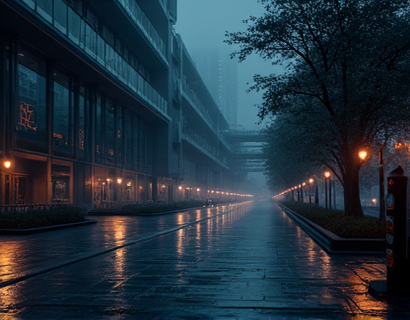Embarking on a Journey Through Time: A Comprehensive Traveler's Guide to the Ancient Indus Valley
The Indus Valley, a cradle of one of the world's oldest civilizations, beckons travelers and history enthusiasts with its rich tapestry of cultural heritage and historical landmarks. This region, spanning parts of present-day Pakistan and northwestern India, offers a unique window into the past, revealing the sophistication and complexity of a civilization that thrived over 4,000 years ago. This guide serves as an essential resource for those planning to explore this ancient land, providing detailed insights into its cultural heritage, historical sites, and practical travel tips to ensure an enriching and unforgettable experience.
Understanding the Cultural Heritage of the Indus Valley
The Indus Valley Civilization, also known as the Harappan Civilization, is renowned for its advanced urban planning, sophisticated water management systems, and intricate craftsmanship. The cultural heritage of this region is a testament to the ingenuity and creativity of its people. One of the most significant aspects of this heritage is the script, which remains undeciphered, adding an air of mystery to the civilization. The artifacts, including seals, pottery, and jewelry, provide valuable insights into the daily life, trade, and religious practices of the Indus people.
Visitors can explore this cultural richness by visiting museums in cities like Lahore and Karachi, which house extensive collections of Indus artifacts. The National Museum of Pakistan in Lahore offers a comprehensive overview, while the Mohenjo-Daro Museum at the archaeological site provides a more focused experience. These museums not only display the artifacts but also offer context through well-curated exhibits and informative panels.
Historical Landmarks: A Journey Through Time
The Indus Valley is home to several UNESCO World Heritage Sites, each offering a unique glimpse into the past. Mohenjo-Daro, one of the most famous sites, is a must-visit for any traveler. This ancient city, with its well-planned streets, public baths, and granaries, showcases the advanced urban design of the Indus people. The Great Bath, a central public bathing facility, is particularly impressive, reflecting the civilization's emphasis on cleanliness and ritual purity.
Another significant site is Harappa, which, along with Mohenjo-Daro, provides a comprehensive view of the urban layout and social structure of the Indus Valley Civilization. The site includes the Citadel, a fortified area with public buildings, and the Lower Town, where residential and commercial areas were located. The sophisticated drainage and irrigation systems found here are a testament to the engineering skills of the Indus people.
Kalibangan, located in the state of Rajasthan, India, is another important site. It is known for its early evidence of wheel-made pottery and the world's oldest known brick-lined furnace. The site also features a well-planned city with a citadel and a lower town, similar to Mohenjo-Daro and Harappa. The Ainu Ware pottery found here is particularly noteworthy, showcasing the artistic skills of the Indus craftsmen.
Local Insights and Hidden Gems
Beyond the major sites, the Indus Valley offers numerous local attractions and hidden gems that provide a deeper understanding of the region's history and culture. One such gem is the archaeological site of Dholavira, located in the Rann of Kutch, Gujarat. This site is known for its well-preserved structures and unique water management systems. The multi-level city, with its fortified walls and intricate drainage system, offers a fascinating insight into the urban planning of the Indus people.
The town of Kot Diji, also in Sindh, Pakistan, is another lesser-known site that is worth visiting. It is one of the earliest known settlements in the Indus Valley, dating back to the early Harappan period. The site features a large number of pottery fragments and tools, providing valuable information about the early stages of the civilization.
For those interested in local culture, a visit to the villages around the archaeological sites can be enriching. The traditional way of life, the local cuisine, and the craftsmanship of the region offer a living connection to the past. The people of these areas often have a deep respect for their historical heritage, and their stories and traditions can add a personal touch to your travel experience.
Practical Travel Tips for Exploring the Indus Valley
Planning a trip to the Indus Valley requires some preparation to ensure a smooth and enjoyable journey. Here are some practical tips to help you make the most of your visit:
- Best Time to Visit: The ideal time to visit the Indus Valley is from October to March, when the weather is pleasant and cooler. Summers can be extremely hot, making outdoor visits challenging.
- Travel Documents: Ensure you have a valid passport and any required visas. It's also a good idea to carry photocopies of your important documents.
- Dress Code: Dress modestly when visiting archaeological sites and religious places. Covering your shoulders and knees is appreciated and often required.
- Guided Tours: Consider joining guided tours, especially for the major archaeological sites. Local guides can provide valuable insights and help you navigate the sites more effectively.
- Stay Hydrated: The climate can be harsh, especially during the summer months. Carry plenty of water and sun protection to stay safe and comfortable.
- Respect Local Customs: Show respect for the local culture and traditions. This includes following local norms and being mindful of your behavior in religious and historical sites.
For accommodations, a mix of luxury hotels and budget-friendly options is available in major cities like Lahore and Karachi. Staying in cities close to the archaeological sites can be convenient, as public transportation and taxis are readily available.
Culinary Delights of the Indus Valley Region
The cuisine of the Indus Valley region is a delightful blend of flavors, influenced by both Pakistani and Indian culinary traditions. Must-try dishes include:
- Biryani: A fragrant rice dish cooked with spices, meat, and sometimes vegetables, often served during special occasions.
- Nan: A type of flatbread that is baked in a tandoor and paired with various curries and stews.
- Samosas: Crispy pastries filled with spiced potatoes, peas, and sometimes meat, perfect for snacking.
- Kebabs: Grilled meat skewers marinated in a blend of spices, often served with rice or bread.
- Lassi: A yogurt-based drink, often flavored with mint or saffron, which is refreshing and cooling.
Restaurants in the region offer a range of dining experiences, from street food stalls to fine dining establishments. Try to sample local specialties and enjoy the hospitality of the people, who take pride in sharing their culinary traditions.
Conclusion: A Journey Worth Taking
The Indus Valley is a treasure trove of history, culture, and natural beauty, offering a unique and enriching travel experience. From the ancient cities of Mohenjo-Daro and Harappa to the lesser-known sites like Dholavira and Kot Diji, each location provides a window into a civilization that thrived over 4,000 years ago. By immersing yourself in the cultural heritage, historical landmarks, and local insights, you can gain a deeper appreciation of this fascinating region.
Whether you are a history buff, an archaeology enthusiast, or simply someone seeking a meaningful travel experience, the Indus Valley has something to offer. With careful planning and an open mind, you can embark on a journey that will leave you with lasting memories and a newfound respect for one of the world's oldest civilizations.










































